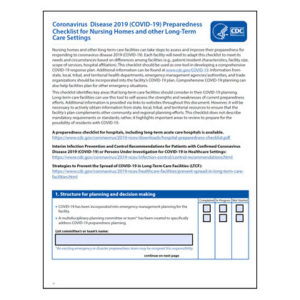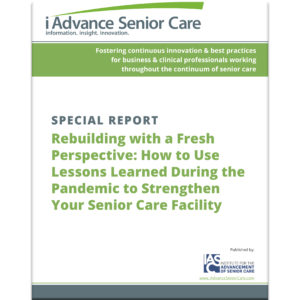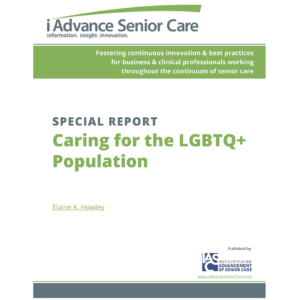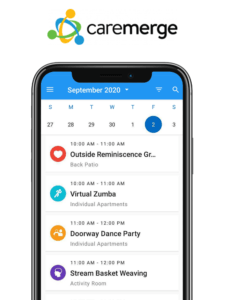Coronavirus: The role of social distancing in senior care facilities
“Social distancing,” a phrase few of us had ever heard or uttered mere weeks ago, is now all over the news as perhaps the single best strategy for reducing the spread of coronavirus and COVID-19 illness.
Social distancing is, of course, challenging in a closed environment like a senior care facility.
Tips for creating social distancing during meals
The American Health Care Association and National Center for Assisted Living released a memo outlining strategies facilities should implement to create social distancing in dining practices:
- Provide in-room meal service for residents who can feed themselves without assistance.
- Identify high-risk choking residents who may cough. Provide these residents with meals in their rooms, or position residents so they are at least six feet away from others in a common room. Staff should wear eye protection and gowns because of the risk of these residents coughing when eating.
- If residents must eat in a common area, bring residents in at intervals. Increasing the number of meal services, positioning tables as far apart as possible, and having residents eat at tables alone can help to minimize risk.
- Space residents who need assistance eating as far apart as possible. Residents should ideally be six feet or more away from each other. Staff who are helping residents to eat should sanitize their hands each time when switching between residents.

Dr. Aimee Ferraro, a faculty member of Walden University’s Master of Public Health program
Dr. Aimee Ferraro, a faculty member of Walden University’s Master of Public Health program, states that “residents with symptoms for COVID-19 should be immediately cohorted or isolated away from healthy residents.” A facility should have a protocol that will:
- Limit symptomatic or exposed residents to their rooms
- Halt group activities and communal dining
- Close units or close the entire facility to new admissions
Even if there are no sick residents within the facility, facilities in areas with community spread of COVID-19 should consider implementing these practices.
According to Dr. Ferraro, “Facilities concerned that a resident, visitor, or employee may be infected with COVID-19 should contact their local or state health department immediately for consultation and guidance.” Guidance on handling these situations differs based on regional mandates for testing, isolation, and quarantine.
Dr. Aimee Ferraro, a faculty member of Walden University’s Master of Public Health program
Social distancing as it relates to visitors
All visitors should receive informational materials like brochures or posters on COVID-19. The information should include details on policies like visitation procedures and the facility’s emergency response plan if a resident becomes infected.
According to Dr. Ferraro, “It is recommended that facilities set up a system for rapid identification and management of ill residents that includes regular screenings (upon admission and daily) for symptoms of acute respiratory illness. There should also be a protocol to monitor that status of visitors to the facility.
“Signs should be posted at the entrance to instruct visitors to not visit if they are exhibiting any signs of respiratory infection. Visitors should be screened for fever and symptoms of respiratory infection before visiting residents.”
She states that if visitor restrictions need to be implemented, the facility should have a process in place that allows visitors to remotely communicate with their loved ones, such as by using cell phones or video-call apps. The facility should also have a policy in place to address situations where visitor restrictions will be lifted, such as for end-of-life situations.
The safest visitation policy, of course, is a no-visitation policy. This can be extremely difficult emotionally for both residents and their families, but facilities must weigh the risks and benefits of various visitation scenarios and come to the best possible compromise.
If visitation is severely curtailed or eliminated, consider implementing tech solutions like video chats to help residents maintain those vital connections with their families. Regular social media updates from administrators — including blog posts, photos, and videos — can help, too.

Paige Cerulli is a contributing writer to i Advance Senior Care.
Related Articles
Topics: Administration , Clinical , Featured Articles , Infection control , Regulatory Compliance , Resident Care , Risk Management










